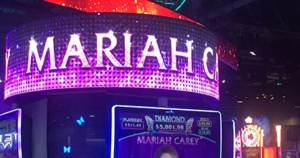What is the first thing a guest does upon walking into a casino? If we are to trust movies and television, this eager guest is likely to pause for a moment to take in the lavish décor. Casinos advertise the kinds of glamorous experiences consumers can’t find anywhere else, so guests are naturally going to make that glamour the very first thing they confirm. To support this luxurious reputation casinos must keep pace with changing trends in interior design, architecture, entertainment, and gaming. This requires them to regularly refresh countless aspects of their services and appearances and also to understand where their peers in adjacent industries are making strides. One of the surging areas where entertainment destinations of all kinds are investing serious attention is in their LED digital signage technology. One specific example that casinos can learn from can be found in the concourses of sports stadiums.
Jutting out into stadium concourse walkways to indicate the entrances to seating sections, wayfinding blades are a necessary element of any well designed stadium. Stadiums find that replacing static or LCD blades with digital signage dramatically increases the distance from which fans fan can spot the blades and thus find their seating section. This lets fans to move more purposefully and efficiently, improving their experience and freeing up the concourse walkways for others. Like a stadium walkway, a casino floor is a remarkably busy environment with countless distractions and bustling foot traffic. Cutting through this commotion requires a display solution that can shine brighter than the attractions around it while being sleek enough to complement the surrounding aesthetic.
For years, casino floors have communicated with guests by installing LCD progressive meters to track and display the growth of potential winnings. As styles have evolved and casinos have integrated smarter and brighter lighting technology into their spaces, LCD technology has grown less effective. Unable to outshine the vibrant games beneath and around them, progressive meters built with LCD technology fail to accomplish the lone purpose they were designed for. A meter that blends in with its surroundings is a waste of money. For progressive meters built with LED digital signage technology, this will never be an issue.
While the contextual application of LED technology is quite different in casinos than it is in stadiums, the ultimate purpose is comparable. These venues need to clearly communicate visual information to audiences, but they must do so amidst a crowded, well-lit, and noisy environment. Stadiums have realized that LED is the only display tech that can achieve this goal, and casinos should follow suit. To learn how casinos have begun this transition to LED for their gaming floor signage, read here how the Four Winds Casino in Indiana worked with Nanolumens to revamp their space.

